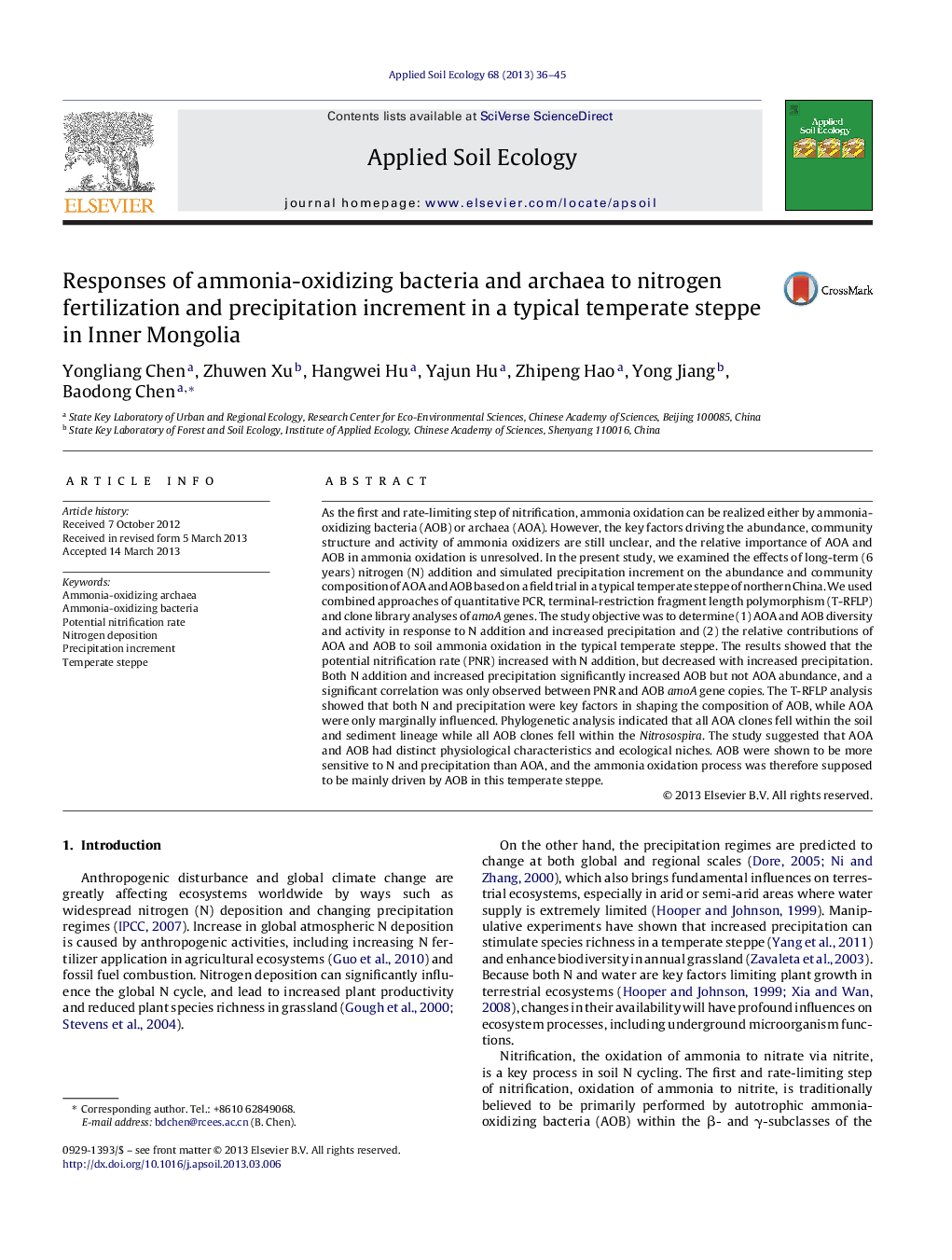| Article ID | Journal | Published Year | Pages | File Type |
|---|---|---|---|---|
| 4382517 | Applied Soil Ecology | 2013 | 10 Pages |
•Examined effects of nitrogen addition and precipitation on ammonia oxidizers.•Nitrogen addition and precipitation significantly influenced AOB but not AOA.•Nitrogen and precipitation had interactive effects on AOB communities.•Ammonia oxidation in the typical temperate steppe was potentially driven by AOB.
As the first and rate-limiting step of nitrification, ammonia oxidation can be realized either by ammonia-oxidizing bacteria (AOB) or archaea (AOA). However, the key factors driving the abundance, community structure and activity of ammonia oxidizers are still unclear, and the relative importance of AOA and AOB in ammonia oxidation is unresolved. In the present study, we examined the effects of long-term (6 years) nitrogen (N) addition and simulated precipitation increment on the abundance and community composition of AOA and AOB based on a field trial in a typical temperate steppe of northern China. We used combined approaches of quantitative PCR, terminal-restriction fragment length polymorphism (T-RFLP) and clone library analyses of amoA genes. The study objective was to determine (1) AOA and AOB diversity and activity in response to N addition and increased precipitation and (2) the relative contributions of AOA and AOB to soil ammonia oxidation in the typical temperate steppe. The results showed that the potential nitrification rate (PNR) increased with N addition, but decreased with increased precipitation. Both N addition and increased precipitation significantly increased AOB but not AOA abundance, and a significant correlation was only observed between PNR and AOB amoA gene copies. The T-RFLP analysis showed that both N and precipitation were key factors in shaping the composition of AOB, while AOA were only marginally influenced. Phylogenetic analysis indicated that all AOA clones fell within the soil and sediment lineage while all AOB clones fell within the Nitrosospira. The study suggested that AOA and AOB had distinct physiological characteristics and ecological niches. AOB were shown to be more sensitive to N and precipitation than AOA, and the ammonia oxidation process was therefore supposed to be mainly driven by AOB in this temperate steppe.
